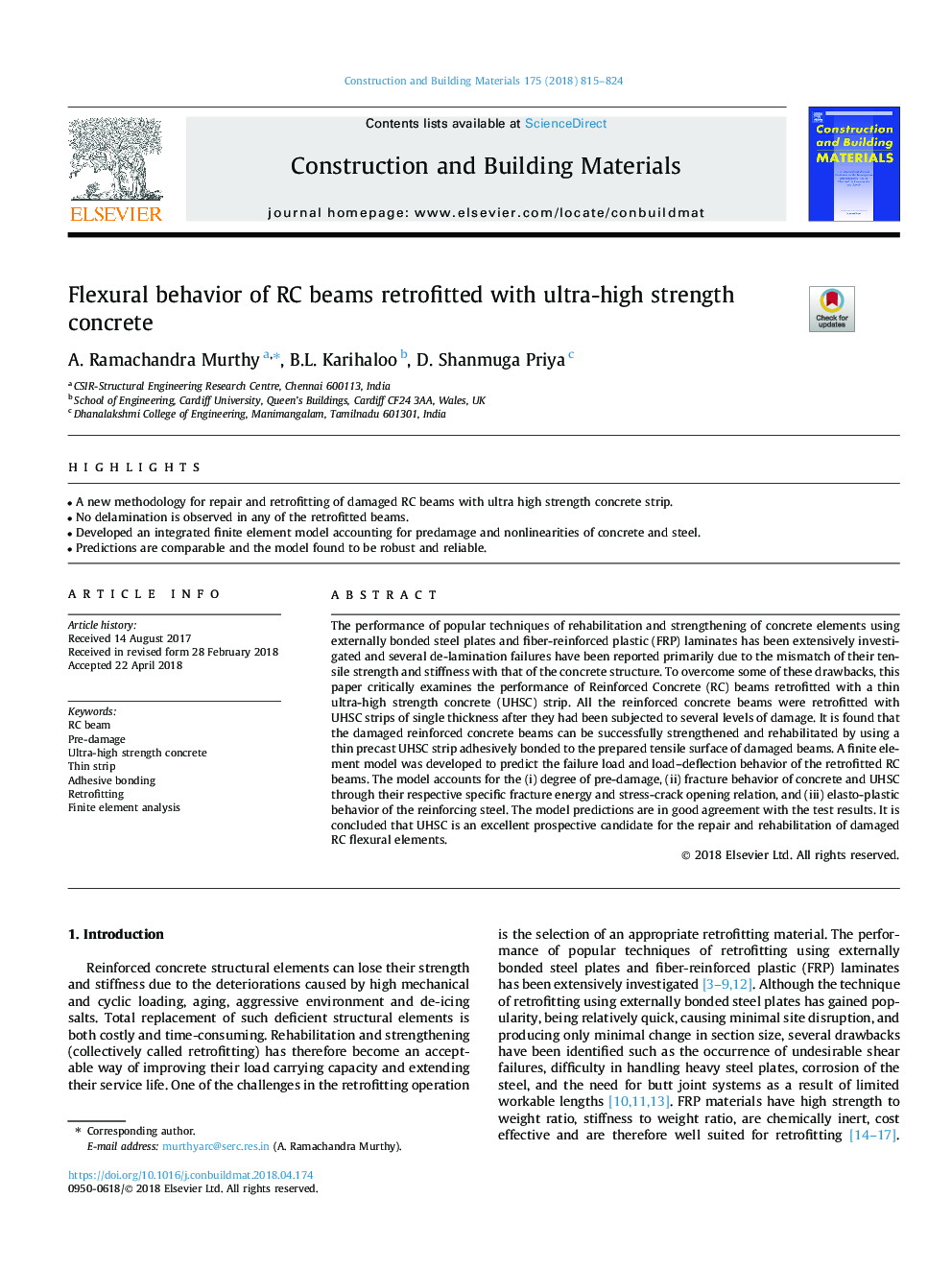| Article ID | Journal | Published Year | Pages | File Type |
|---|---|---|---|---|
| 6713687 | Construction and Building Materials | 2018 | 10 Pages |
Abstract
The performance of popular techniques of rehabilitation and strengthening of concrete elements using externally bonded steel plates and fiber-reinforced plastic (FRP) laminates has been extensively investigated and several de-lamination failures have been reported primarily due to the mismatch of their tensile strength and stiffness with that of the concrete structure. To overcome some of these drawbacks, this paper critically examines the performance of Reinforced Concrete (RC) beams retrofitted with a thin ultra-high strength concrete (UHSC) strip. All the reinforced concrete beams were retrofitted with UHSC strips of single thickness after they had been subjected to several levels of damage. It is found that the damaged reinforced concrete beams can be successfully strengthened and rehabilitated by using a thin precast UHSC strip adhesively bonded to the prepared tensile surface of damaged beams. A finite element model was developed to predict the failure load and load-deflection behavior of the retrofitted RC beams. The model accounts for the (i) degree of pre-damage, (ii) fracture behavior of concrete and UHSC through their respective specific fracture energy and stress-crack opening relation, and (iii) elasto-plastic behavior of the reinforcing steel. The model predictions are in good agreement with the test results. It is concluded that UHSC is an excellent prospective candidate for the repair and rehabilitation of damaged RC flexural elements.
Keywords
Related Topics
Physical Sciences and Engineering
Engineering
Civil and Structural Engineering
Authors
A. Ramachandra Murthy, B.L. Karihaloo, D. Shanmuga Priya,
